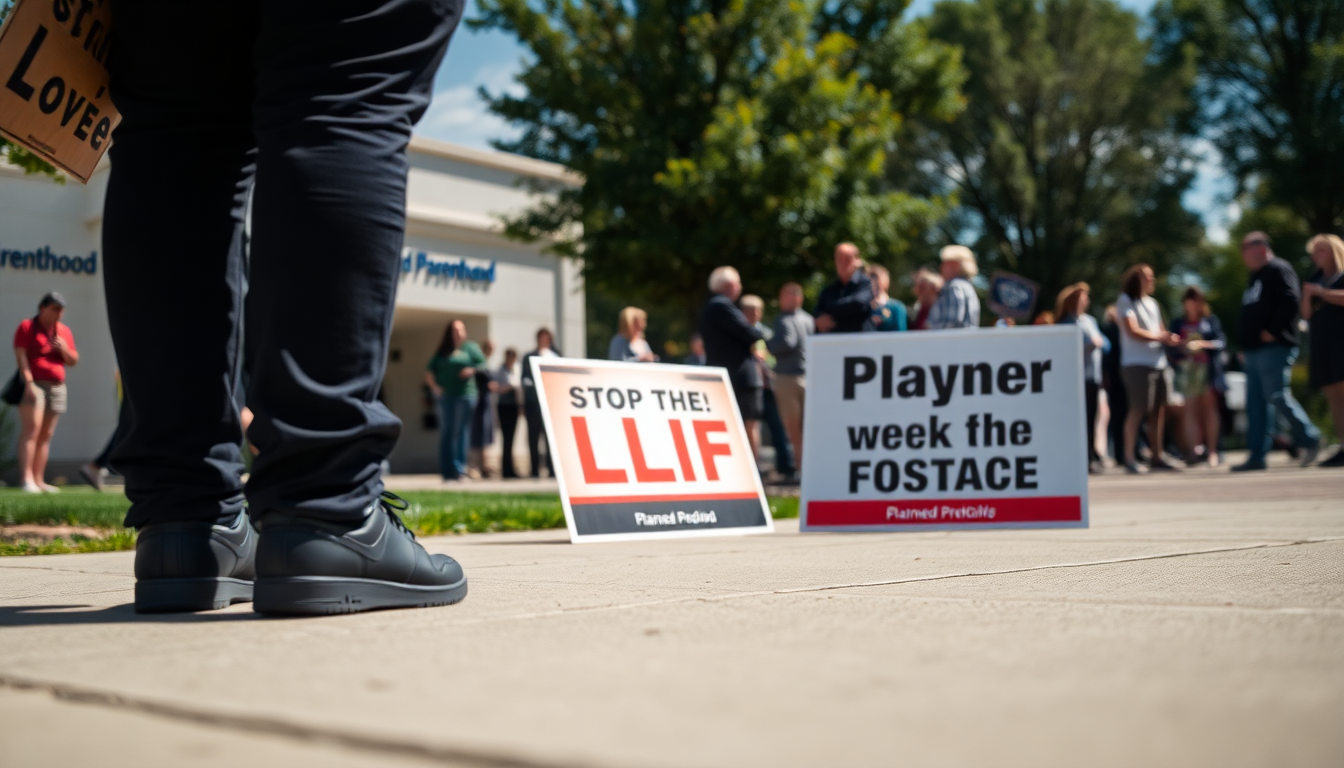Table of Contents
The recent conviction of Patrick Brice, a man found guilty of assaulting two pro-life activists outside a Planned Parenthood facility in Baltimore, raises some serious questions about public discourse and safety in politically charged environments. On May 26, 2023, a heated confrontation escalated into violence, leading to Brice receiving a sentence of home detention and probation. But this case isn’t just about Brice’s actions; it highlights broader societal issues related to freedom of expression, the safety of activists, and how our legal system responds to politically motivated violence. What does this mean for us as a society?
Incident Overview and Legal Proceedings
The altercation unfolded outside a Planned Parenthood clinic, where Brice got into a heated exchange with Richard Schaefer, one of the victims. Surveillance footage shows Brice shoving Schaefer into a flowerpot and later assaulting 73-year-old Mark Crosby when he tried to intervene. This violent outburst led to Brice’s conviction on two counts of second-degree assault and reckless endangerment. Despite the prosecutor’s recommendation for a ten-year sentence, Judge Yvette M. Bryant settled on a year of home detention, a decision that sparked outrage from both the victims and advocacy groups.
During the court proceedings, Brice expressed remorse, claiming that a perceived racial remark from Schaefer triggered his violent reaction. This raises troubling questions about the underlying tensions that can surface during public debates, especially on contentious issues like abortion. The legal outcomes of this case shine a light on the critical intersection of justice and public safety, particularly since the victims were simply exercising their rights to share their beliefs. Isn’t it alarming how easily discussions can turn violent?
Victim Impact and Community Reaction
The aftermath of the assault has left deep scars on the victims, particularly Crosby, who now suffers from permanent eye damage. Community leaders and advocates have condemned the attack, framing it as a targeted assault against individuals promoting pro-life values. Tom Brejcha, President of the Thomas More Society, described it as an act of cowardice, emphasizing the brutality faced by elderly activists who were merely praying and offering support to expectant mothers. How can we allow such violence to occur against those simply trying to help?
Photographic evidence from the scene, shared by local activists, depicted Crosby’s injuries and further galvanized public sentiment against such acts of violence. This incident has ignited discussions about the safety of activists, especially those holding minority viewpoints in a polarized climate. Many are also questioning the perceived leniency of the sentence, arguing that it doesn’t reflect the severity of the crime. Shouldn’t justice be proportional to the harm done?
Implications for Public Discourse and Activism
This case serves as a stark reminder of the risks involved in public advocacy and how discussions can quickly spiral into violence. The legal repercussions for Brice, combined with the victims’ experiences, highlight the urgent need for civil discourse, even amid passionate disagreements. The incident has prompted calls for enhanced protections for activists, particularly in areas where public opinion can lead to confrontation. How can we create a space where everyone feels safe to express their views?
As society grapples with divisive issues, fostering environments where constructive dialogue can take place without the threat of violence is crucial. The Patrick Brice case illustrates the pressing need for discussions about the boundaries of free expression and the responsibilities that come with it. Advocates from all sides of the debate must recognize the importance of maintaining respect and civility, even when tensions run high. Can we learn to disagree without resorting to violence?
Conclusion: Moving Forward
The conviction of Patrick Brice isn’t just about one individual’s actions; it’s a broader commentary on the state of public engagement and safety in political discussions. As communities strive to heal from the impact of this assault, advocating for a culture that prioritizes respect, understanding, and non-violence is essential. The conversation surrounding this incident should lead us to re-evaluate how society approaches contentious issues, ensuring that all voices can be heard without the fear of physical retaliation. What kind of future do we want to create when it comes to public discourse?


